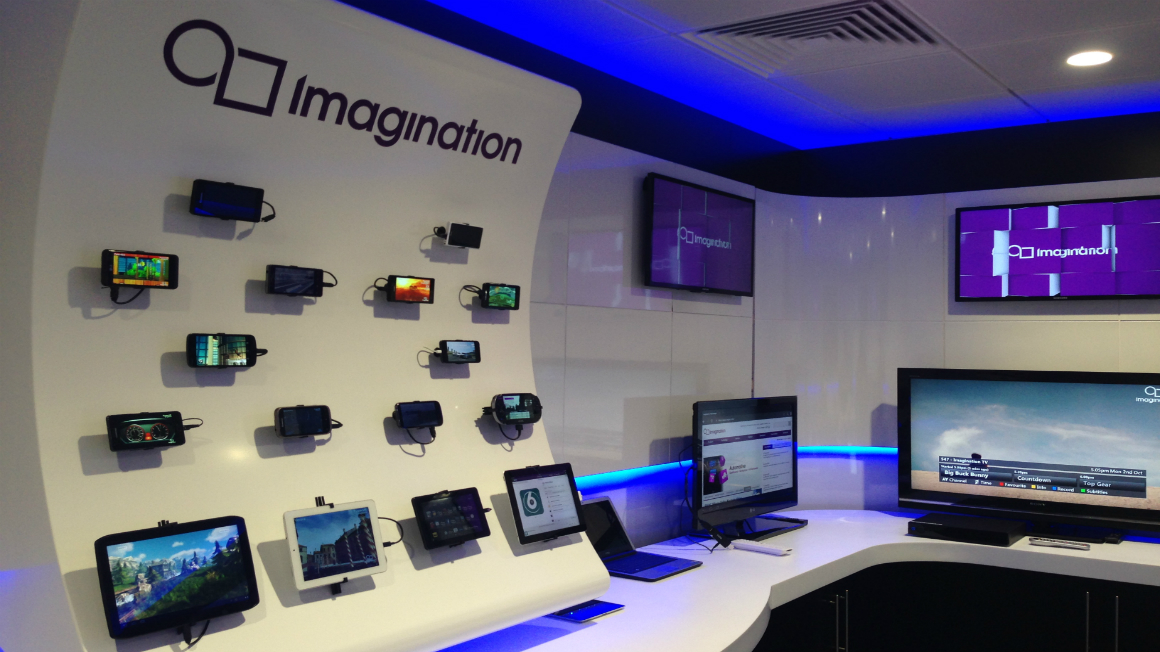Why ray tracing will take graphics beyond your imagination
UK gadget fun house takes the next step

You might not have heard of Imagination Technologies but there's a good chance you're familiar with its work. Some of it could be in your pocket right now. There's even a chance that the display you're reading this on is powered by the technology Imagination designed.
Smartphones, tablets, laptops, TVs. The iPhone 5, the Samsung Galaxy S4, the PS Vita. Run through the list and it becomes more of a question of what Imagination isn't in.
Imagination Technologies, based in Hertfordshire, is as British as they come, and yet its global reach is phenomenal. Designing the architecture for graphical chips and microprocessor, the company is a competitor to ARM.
TechRadar is at Imagination HQ in Hertforshire and we've been taken into some sort of gadget funhouse. The walls are covered in phones, tablets and TVs, while radios scatter the benchtops. Everything with a screen is powering some sort of graphics demo, it's hypnotising. Of course, these are all products in which Imagination's handiwork can be found, and suddenly it's difficult to ignore the extent of Britain's technology reach.
We're not alone though. Imagination CEO Sir Hossein Yassaie, recently knighted for his work in technology and innovation, is with us. Admiring the number of products on display, we ask him how it feels to be such an integral part of so much consumer technology and yet be so relatively unknown. He humbly bats away any suggestions that ego plays a part, but then grins, "I certainly get a great kick," he says.
"You just look in the shops, or even walking around, people are using products that you've had big things to do with. I think that is satisfaction in itself."

But there's something sat in the corner of the room that's caught our eye - a computer displaying a 3D model of what looks like a red Porsche. This, we're told, is ray tracing in action.
Sign up for breaking news, reviews, opinion, top tech deals, and more.
Back in 2010, Imagination purchased Caustic Graphics, one of its most significant acquisitions ever. Caustic is the developer of real-time ray tracing technology, a whole new way for graphics to be rendered to a photorealistic level.
With ray tracing, light becomes a key part of the datatypes that can be understood, meaning that both lighting and shadows are detected automatically and every surface absorbs as much or as little as necessary to mimic reality.
Not only does it produce stunningly lifelike graphics, it does so at astonishing speeds. This increases the efficiency of graphics rendering by a significant magnitude, cutting costs as well as time. Tasks that once took fifteen minutes due to the requirement for manual input can now take fifteen seconds.
Ray of hope
TechRadar is given a demonstration of the technology in action using the car on screen. With just a click, the colour of the car's entire body is changed from red to green, yet even as the model is moved around, every part of the chassis reflected light in a way that made it look incredibly lifelike.
When we start prodding at how Imagination has harnessed the technology, the team is cagey to divulge its secrets beyond how they've found better ways of bundling light together.
"This is the beginning," says Yassaie. "It's mark one...from the point of view of what is possible once everything is developed. But it's still a system that even in its current incarnation is several times faster than anything you can get and is a lot cheaper."
While the technology is already being shipped in some chipsets, things are set to pick up speed. "I think the real potential for ray tracing is going to come in the next three to five years," Yassaie tells us.

Hugh Langley is the ex-News Editor of TechRadar. He had written for many magazines and websites including Business Insider, The Telegraph, IGN, Gizmodo, Entrepreneur Magazine, WIRED (UK), TrustedReviews, Business Insider Australia, Business Insider India, Business Insider Singapore, Wareable, The Ambient and more.
Hugh is now a correspondent at Business Insider covering Google and Alphabet, and has the unfortunate distinction of accidentally linking the TechRadar homepage to a rival publication.